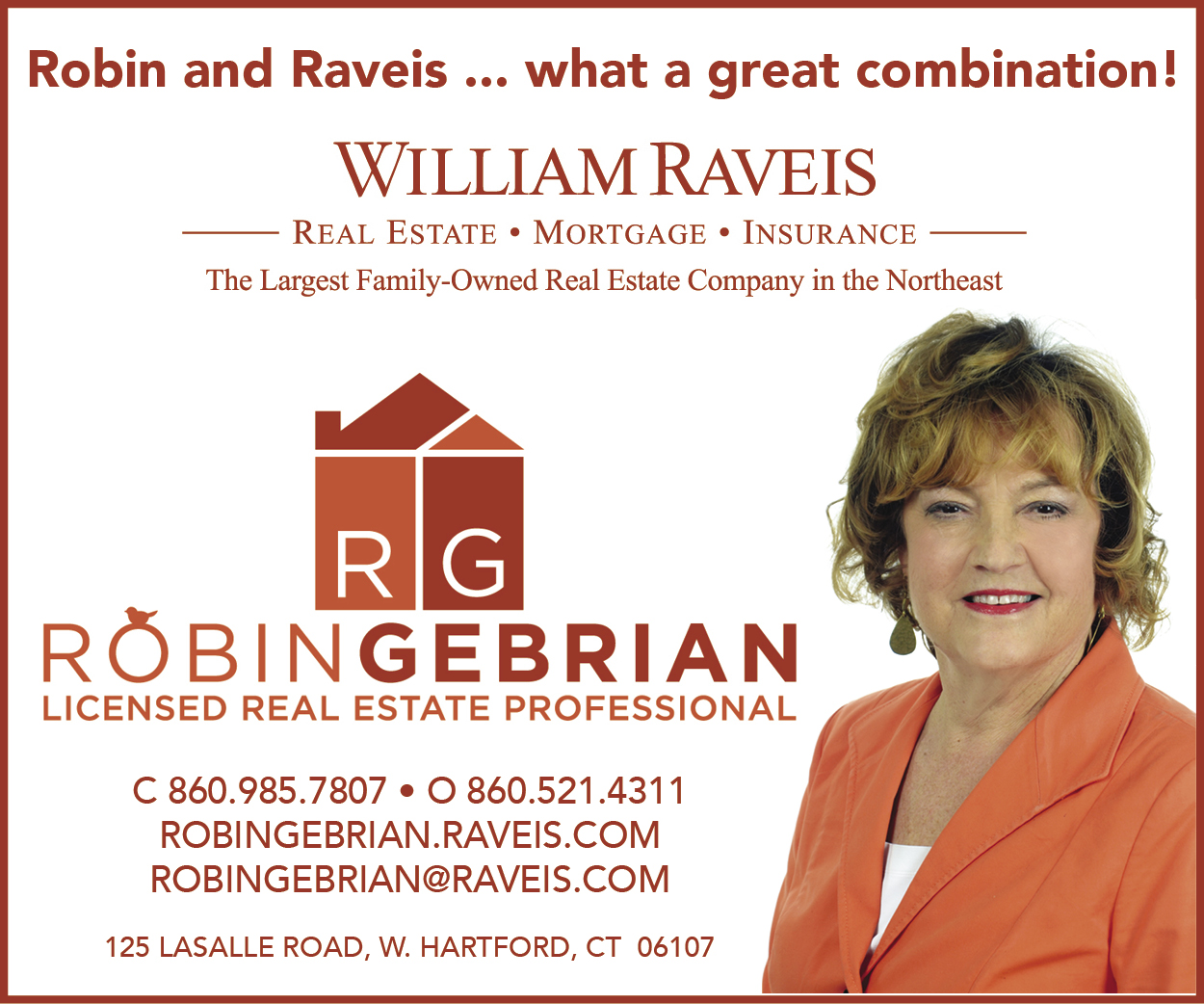“We need to ask…what strategies are we using to engage people in our institutions, and how can we shift the shape of Jewish engagement?”
By Cindy Mindell
Eight months after the publication of A Portrait of Jewish Americans, reaction across the country has shifted from alarmist wringing of hands to enthusiastic rolling up of sleeves. Among those leading the “less talk, more action” campaign is Dr. Ron Wolfson, a veteran Jewish educator who has dedicated his career to bringing Judaism alive in homes and synagogues.
He will bring the post-Pew community conversation to New Haven this month.
Wolfson’s interest in synagogues dates back to his involvement in a Conservative congregation, Beth El, in his home town of Omaha, Neb. Over the course of his career, he has visited hundreds of synagogues across North America and beyond as a consultant, teacher, and scholar-in-residence. He is co-founder, with Rabbi Lawrence Hoffman, of Synagogue 2000 and is currently president of Synagogue 3000, an initiative designed to empower congregations and communities to create synagogues that are sacred and vital centers of Jewish life.
Wolfson has taught since 1975 at American Jewish University (AJU), where he is now a Fingerhut Professor of Education for the Graduate Center for Education. During his career at AJU, he has served as director of the Education Department, founding director of the Whizin Center for the Jewish Future, director of the Ramah Academy, dean of the Fingerhut School of Education, special assistant to the president, and vice president of the university. A pioneer in the field of Jewish family education, Wolfson is a member of the Consortium for the Jewish Family. His series of books on the Art of Jewish Living, published by Jewish Lights Publishing, have sold more than 100,000 copies.
Through Jewish Lights Publishing, Wolfson is the author of The Seven Questions You’re Asked in Heaven, The Spirituality of Welcoming: How to Transform Your Congregation into a Sacred Community, and God’s To-Do List: 103 Ways to Be an Angel and Do God’s Work on Earth, as well as the book series, The Art of Jewish Living. His latest book is Relational Judaism: Using the Power of Relationships to Transform the Jewish Community.
Wolfson spoke with the Ledger about his latest book and focus, Relational Judaism: Using the Power of Relationships to Transform the Jewish Community (Jewish Lights Publishing, 2013), and the new look of Jewish communal life.
Q: What’s your take on the Pew’s portrait of Jewish Americans?
A: For me, the study was not a surprise. It echoed much of what we learned from the 2011 Jewish Community Study of New York [UJA-Federation of New York]. There has not been a national Jewish population study since 2000, either because Jewish Federations of North America hasn’t raised the money to do a survey or has not decided to spend the money on a survey. So all we have to go on are local demographic studies.
The headlines from the Pew study were about the increasing number of “Nones,” those not engaged in Jewish life, who say they’re not religious or don’t affiliate with a religious organization, etc. We’ve seen that trend for 10 or 15 years, probably because you have an increasing number of younger people waiting to get married later in their lives. It’s not unusual for someone in their mid- to late 30s or early 40s not to be married. Marriage is a good predictor of involvement in Jewish organizations. If you’re not married, you probably don’t have kids, and so you’re probably not engaged in the Jewish community.
There’s a growing phenomenon of a 20-year gap in Jewish engagement, between college and getting married and having children – the time Jews typically get involved again in the Jewish community. That has been developing over the last 20 to 30 years and has a huge impact on overall Jewish engagement.
On the flip side, there’s an increase in the Baby Boomer generation, many of whom are empty nesters, and they tend to drop away from affiliation with Jewish organizations as well, unless there’s a community connection through friendship groups, for example.
Last year, I spoke at both the United Synagogue of Conservative Judaism Centennial and Union for Reform Judaism Biennial, and everybody wanted to talk about the Pew study. It’s fine to talk but I want to do something about it. My career is about understanding the trends in the Jewish community and helping Jewish communal organizations and, with Larry Kaufman, stimulating synagogue revitalization.
My new book [Relational Judaism: Using the Power of Relationships to Transform the Jewish Community] is seeking to engage people in the Jewish experience. It’s less about analysis and more about changing the paradigm of engagement from programmatical and transactional to relational.
Q: Define “relational Judaism” and the evolution of this concept.
A: A simple definition of a relational community is face-to-face relationships that engage you in a Jewish experience that helps you find a path to meaning and purpose, belonging, and blessing. To unpack that is a longer conversation, but the emphasis on relational Judaism is really building relationships on a number of levels between individuals and “the Jewish experience.”
There are basically three different areas in which organizations will work and this is what we’ll talk about when I visit New Haven. One level is building relationships between leaders and members of an organization, ensuring that the leadership of the organizations knows everybody on a different level than how we typically know our people.
Second, successful organizations are moving from a transactional model to a relational model. “Transactional” is being engaged in an organization for a particular purpose, and when I’m done using you, I’m out of there. “Relational” is building micro-communities of relationships, particularly among the members themselves. The litmus test for synagogue affiliation is, do people have a community there? Do they have friends and relationships there? That’s usually a good test of whether or not the organization has been successful in linking people together.
The third area addresses the goal of Jewish institutional affiliation, which is to help people strengthen their relationships on the nine levels I identify in the book.
It’s all about relationships. We are a covenantal people. It’s not a radically new idea to refocus our energy on what I think is the most pressing need for our institutions, given the Pew study – which I think, if anything, shows that the old model of engagement is not working as well as it used to. To chart a new path forward, we need to ask what are we in business for, what strategies are we using to engage people in our institutions, and how can we shift the shape of Jewish engagement?
It’s extraordinarily important to track what happens when you develop these relationships and be nimble enough to change up the strategy if it’s not working and double down on the strategies that are. We’re not very good at that. We’re good at tracking donors and fundraising but we’re not so good at tracking how every person engaged in the community is progressing on their own Jewish journey, and is connected with others in the Jewish community, including the communal leaders.
In America generally – and Robert Putnam from Harvard pointed this out 15 years ago in his book, Bowling Alone – people have become disconnected from community. In the same way, Jewish people in America have readily embraced American individualism. In The Jew Within, social scientists Steven Cohen and Arnie Eisen pointed out that American Jews are so comfortable in America that we’ve embraced many of the qualities of American individualism, which has resulted in much more individuated Jewish experience.
Q: What challenges are you seeing in Jewish communities outside North America in terms of engagement?
A: My most recent experience was in Australia, last fall. The Union for Progressive Judaism – the Reform, liberal movement in Australia and Southeast Asia – is facing the same sort of phenomenon: their affiliation rates are down, they’re competing with people’s busy lives, it’s not terribly different from here.
My reportage from different communities across the country and around the world is that most Jewish communities are facing this issue. There are some differences in smaller Jewish communities – in the Midwest, for example. In Omaha, there’s a much higher affiliation with synagogues and the Jewish community than in the New York Metro or Los Angeles. But I often say that what happens on the West Coast will quickly come to the Midwest; I’ve seen it happen over and over again.
What happens in California will come to the east coast soon enough. In Los Angeles, during the High Holidays, there are a number of alternatives to going to synagogue, and not just Chabad. Rabbis who don’t have full-time jobs offer “pop-up” worship experiences at a cheap rate. The same thing is beginning to happen on Long Island and the established synagogues are correctly concerned about this.
That kind of West Coast phenomenon will probably happen more in the years ahead as people seek alternative avenues – what I call “episodic Jewish connections” – or can’t afford or say they can’t afford to support synagogues at the level synagogues require to keep staff employed and hire teachers and keep the heat on. Not to mention that the Chabad model, just the opposite of the synagogue-affiliation model, has been extraordinarily successful in many communities. I say let’s learn what’s going on that makes them so successful.
Q: What are some of the less successful initiatives that struggling synagogues undertake in trying to revive their congregations?
A: The biggest one is over-reliance on older models of engaging people once they’re in the synagogue. There are different sorts of traditional ways we think of engaging people. One is, “We’re going to get kids into the religious school and that will create long-term relationships amongst the adults in the community.” That could happen but only if the synagogue leadership, including educators, understand that parents at certain grade levels are natural affinity groups and could be developed into micro-communities. But a lot of synagogues assume that it’s just happening and don’t work at it, and that’s an area where we could improve dramatically.
Another traditional model is community work. It’s wonderful when people volunteer their time to serve on a board of a synagogue or a JCC, and these are great people who want the best for the institution. But, in addition to the financial and fundraising and management responsibilities, there ought to be community-engagement responsibilities as well. Some larger synagogues have membership directors, and some JCC directors are really onto this engagement work and do a terrific job in getting to know the people at their institution and linking them to programs and to each other. But in some institutions, membership directors are merely database collectors or accountants and that is not the direction we need to go in. Rather, we need to look at how we are spending our time, how we are getting to know our people, and how we are linking them with our key professionals. That is a critical area of this work.
There’s nothing wrong with programs, but can you transform the program into something more? If people just come to programs and don’t meet each other and don’t get to deepen their social engagement and what they’re doing and learning, it’s a missed opportunity. That’s another area we could do a better job in, in engaging our folks.
Some see this as a discussion about outreach or in-reach, and there’s a debate about whether we should use money to reach out to the “Nones” or to those already engaged. What I’m seeing at a lot of the institutions I work with is a focus on in-reach. It’s true in business and in Jewish communal life that it’s easier to get someone already engaged to become more deeply involved than to attract a new person to the organization. So we need to look at what we have done to ensure that the retention rate amongst parents and older congregants is strengthened.
There’s a terrible, not-so-secret deal struck between a lot of Jewish parents and their kids: do this bar/bat mitzvah thing and then you can make your choice about Jewish engagement. The emphasis on b’nai mitzvah takes away from the goal of creating a lifelong relationship between a congregation and a family and the individuals in that family. The question is, what do you do in the run-up to bar mitzvah with those families that will increase the likelihood that they’ll all stick around? There are examples in my book of synagogues really working hard on this.
The beginning of transformation is understanding what is going on now and figuring out one or two areas of work that is urgently required to change the reality on the ground.
Q: What has changed between Synagogue 2000 and Synagogue 3000?
A: Synagogue 2000 represented the first 10 years of work that Rabbi Lawrence Hoffman and I undertook. We created communally funded city- and area-wide cohorts of synagogues across denominations that worked to rethink their mission as “sacred communities” and transform the worship experience, improve the ambiance of welcoming, etc. It had tremendous impact, especially in Reform and Conservative congregations.
We took a break and each wrote a book about our first 10 years of experience: Larry wrote Rethinking Synagogues: A New Vocabulary for Congregational Life and I wrote The Spirituality of Welcoming: How to Transform Your Congregation into a Sacred Community.
Then we started talking about the next cutting edge of synagogue life.
We created Synagogue 3000 and its “Next Dor Initiative” to engage young professionals within the walls and outside the walls of the synagogue. We worked in six pilot sites around the country, with funding from the Marcus Foundation, to help synagogues hire an engagement professional – a rabbi or community organizer – and develop their sense of purpose and get beyond the “programming mentality.” Each site used the same relational-engagement strategy but engaged the population in a unique way.
In St. Louis, a synagogue owned an adjacent home next door that they transformed into a hangout, like Moishe House on steroids, for young Jews from all over the area. In San Francisco, a young dynamic rabbi created The Kitchen to reach families with very young children who were not attracted to mainstream synagogues.
We’re now finding that synagogues want to learn from the Next Dor initiatives and broaden the reach across the demographics of their congregations.
Q: How do you hope to engage participants in your New Haven presentations?
A: My goal is to address these same issues, alert the community leadership about what our real mission and goal are, and then to really think with them about strategies of relational Judaism that are beginning to have an impact on our organizations, and explore how things might change to enable our lay and professional leadership to do this work. My goal is to inspire people to return to their organizations and think these issues through.
What I’ve learned in 20 years of working on synagogue transformation is that, if the whole institution is not on the same page – and I mean literally on the same page – it’s very difficult to make transformation happen. It’s already difficult to transform an organization. But in those organizations where the leadership has been studying my book and other resources, and where there’s a deliberate effort to look at strategies of engagement and initiate some first steps of relational engagement, I see exciting things happening.
My hope is that other synagogues and institutions will figure out what they can do with all of this. My book is in its third printing in seven months, which I’m very happy about, but I’ll only be satisfied when I see these institutions embrace the strategies of relational Judaism. It will be very experimental: some things will work and some things won’t.
I hope a lot of people will come and get excited and inspired about the message and to do the work at their institutions.
“Relational Judaism” with Greater New Haven Scholar-in-Residence Dr. Ron Wolfson: Thursday, Feb. 20 – Saturday, Feb. 22. For the full program of free events visit www.jewishnewhaven.org or call (203) 387-2424, ext. 325.
Comments? cindym@jewishledger.com.







 Southern New England Jewish Ledger
Southern New England Jewish Ledger















